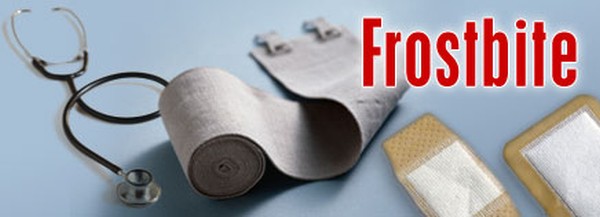Sir Ranulph Fiennes, a famous British explorer, holds a number of endurance records. Sir Ranulph Fiennes is popular for being the first person to completely walk across Antarctica on foot (not bare, take note), earning the title “first person to visit the North and South Pole by surface.” In the year 2000, the adventurer tried to walk alone and unsupported to the North Pole, but unfortunately, he aborted his expedition when his sleds feel through weak ice. He suffered severe frostbite on the tips of the fingers of his left hand. Even though his surgeon insisted on keeping his gangrene fingertips, the pain was too much for Fiennes. Fiennes, himself, severed the top third of all left fingertips using a fretsaw. However, it should be noted that cutting the area afflicted with the frostbite is the last resort and should not be performed by self, more so without permission of a medical doctor.
 Frostbite results from exposure to extremely cold temperatures for an extended period of time causing the underlying tissues to freeze. Aside from the extremities of the body, the nose and ears are the most common areas of the body to be affected by frostbites. Symptoms of frostbite include white or graying-yellow skin, with very cold and waxy of hard feel. The skin may even itch, burn or insensitive. Hardening and blistering results from severe or deep frostbite. The affected skin region will become red and painful as it thaws. Seek medical attention immediately
Frostbite results from exposure to extremely cold temperatures for an extended period of time causing the underlying tissues to freeze. Aside from the extremities of the body, the nose and ears are the most common areas of the body to be affected by frostbites. Symptoms of frostbite include white or graying-yellow skin, with very cold and waxy of hard feel. The skin may even itch, burn or insensitive. Hardening and blistering results from severe or deep frostbite. The affected skin region will become red and painful as it thaws. Seek medical attention immediately
To properly treat frostbite, the key is gradually warming the afflicted skin region. The first important step is to protect the skin from further exposure. If the person is still outside, tuck the frostbitten hands into the armpits. To protect the face, specifically the nose and ears, cover the region with dry, gloved hands. Do not massage the frostbitten skin. Moreover, do not massage the affected region with snow or break blisters. If possible, get the person to the warm place. Once indoors, take out the wet clothes and replace with warm, dry clothes.
Slowly warm the frostbitten regions by placing the frostbitten hands and/ or feet in warm water, approximately 40-42 ˚C (104-107 ˚C), until sensations return. Cover the other areas of the body in a warm blanket. Direct heat, such as stoves, heat lamps or fireplace, must not be used to avoid burns. The skin will not feel the burns due to their numbness from frostbite. In order to avoid damaging the tissue, do not walk on frostbitten feet or toes. Do not warm the affected area if there are chances of freezing again to prevent further damage. However, if the regions are already thawed, the areas should be enclosed again in order to avoid refreezing. Lightly apply dry, sterile dressings. To keep the toes and fingers separated, place clean cotton balls or gauze in between them. To rehydrate and replace lost fluids, give warm drinks to the person. If numbness and pain persists during thawing or if blisters develop, call for emergency medical help.
Although these instructions are useful, first aid training is not substitutable. It is recommended for people who live in colder temperatures to receive first aid certification especially with regard to frostbite and hypothermia emergency situations.

